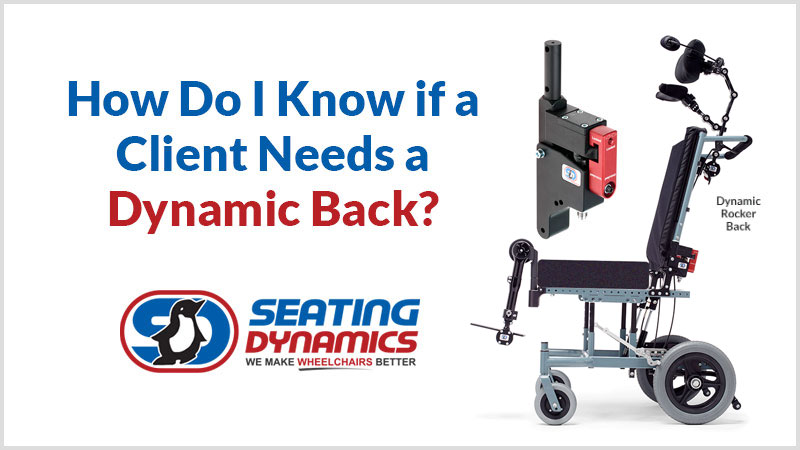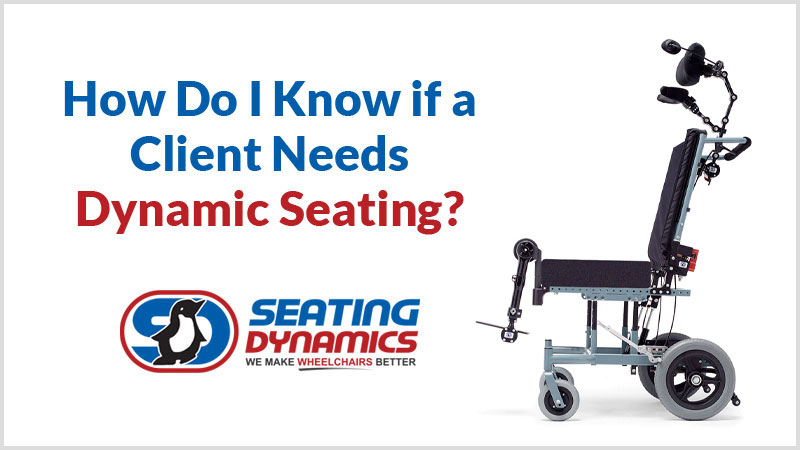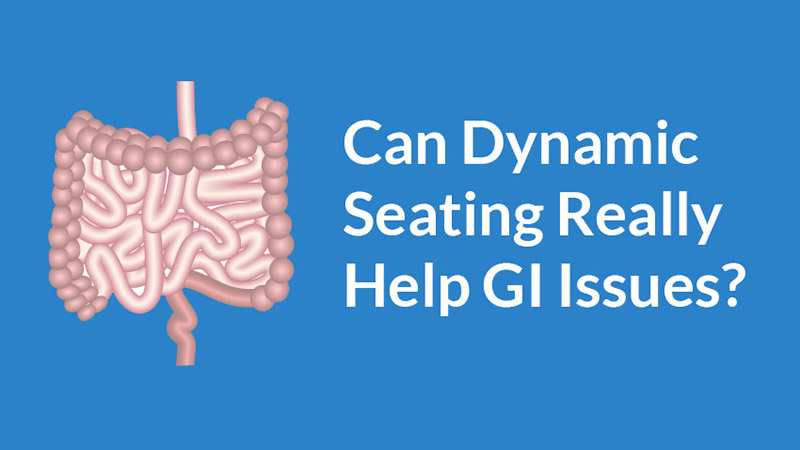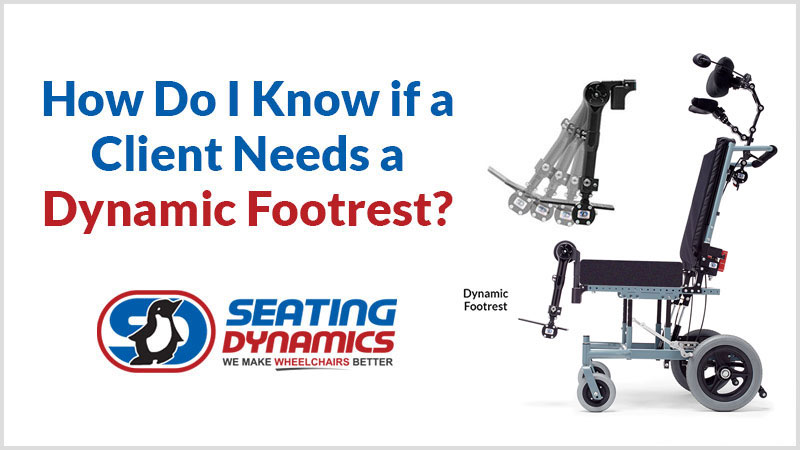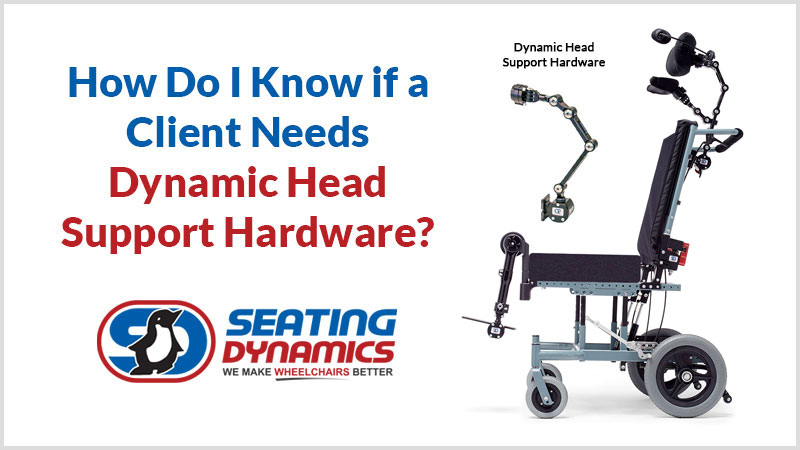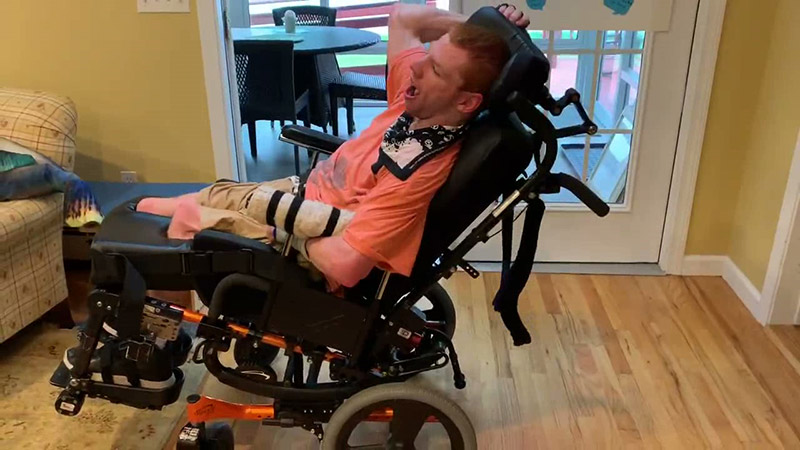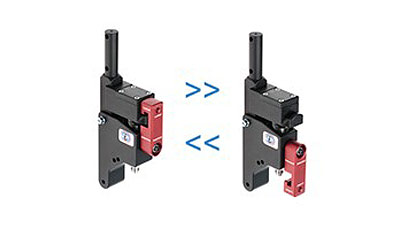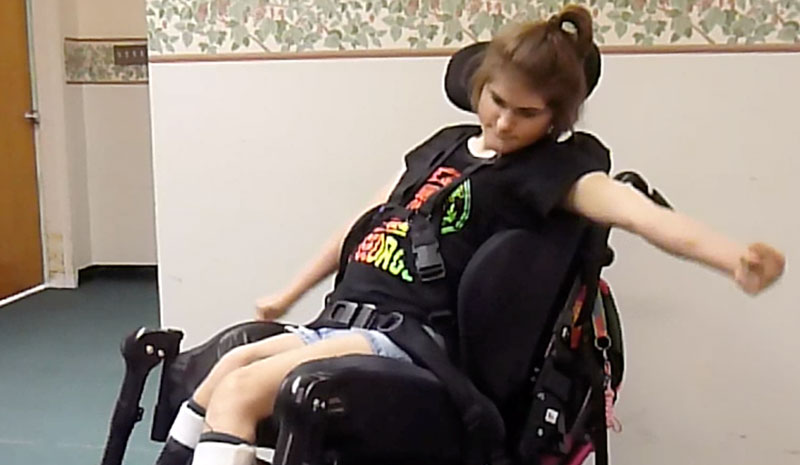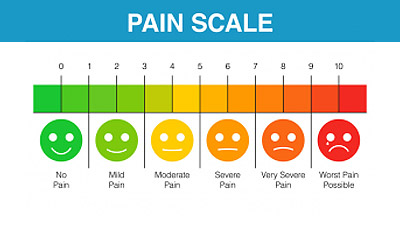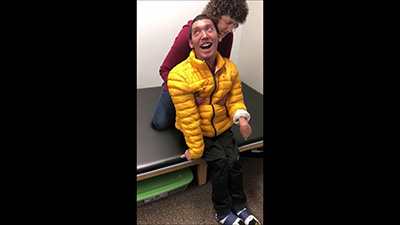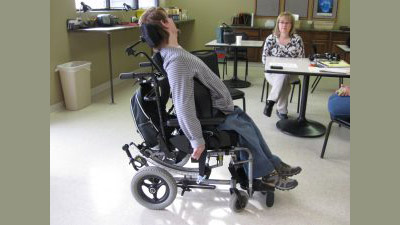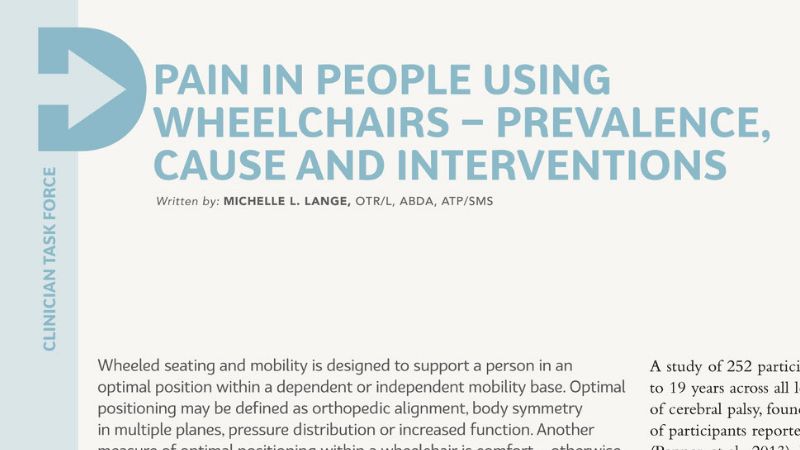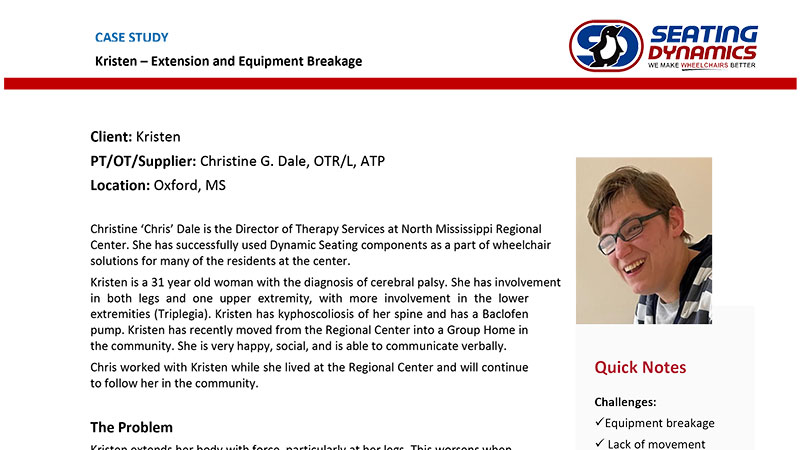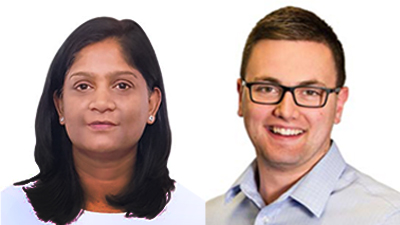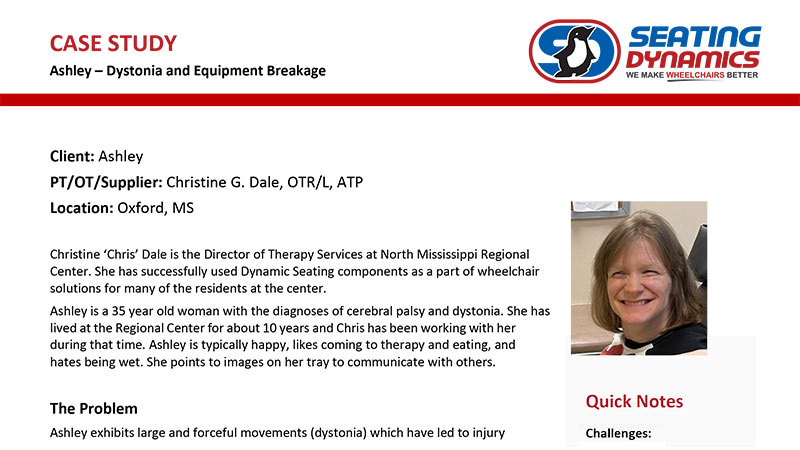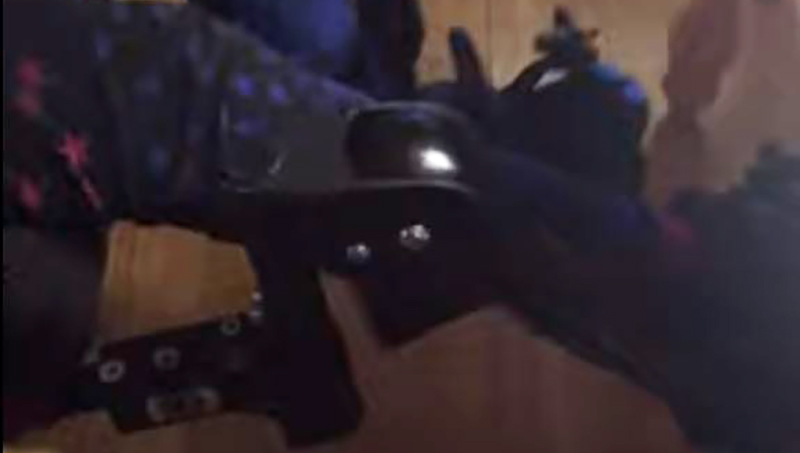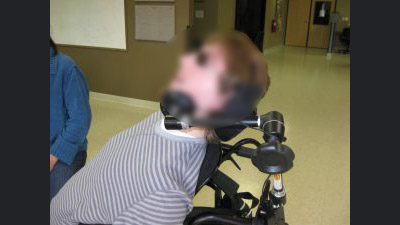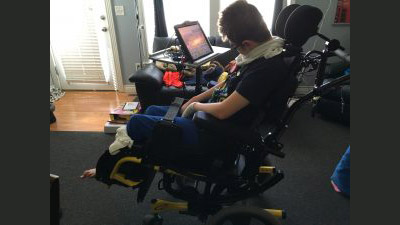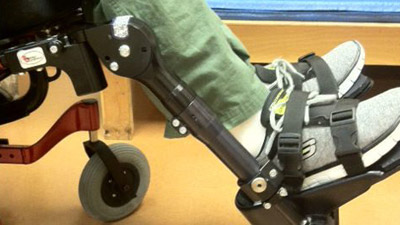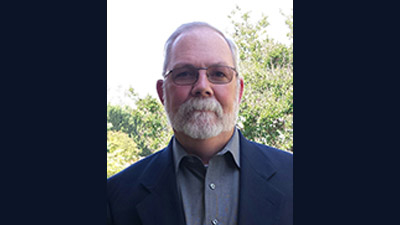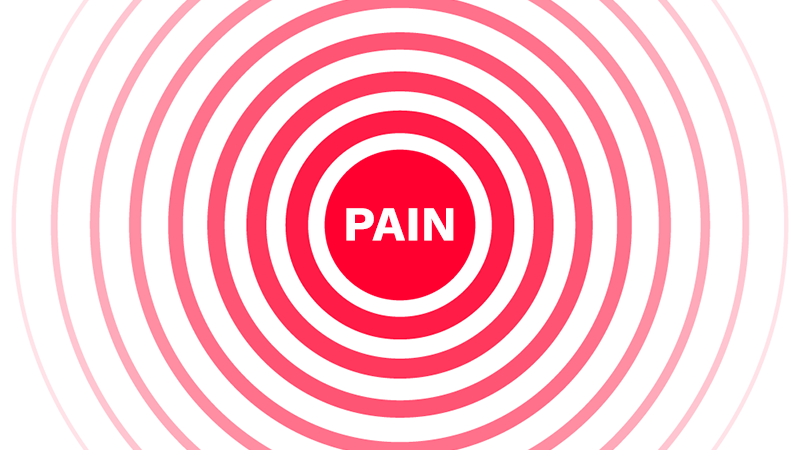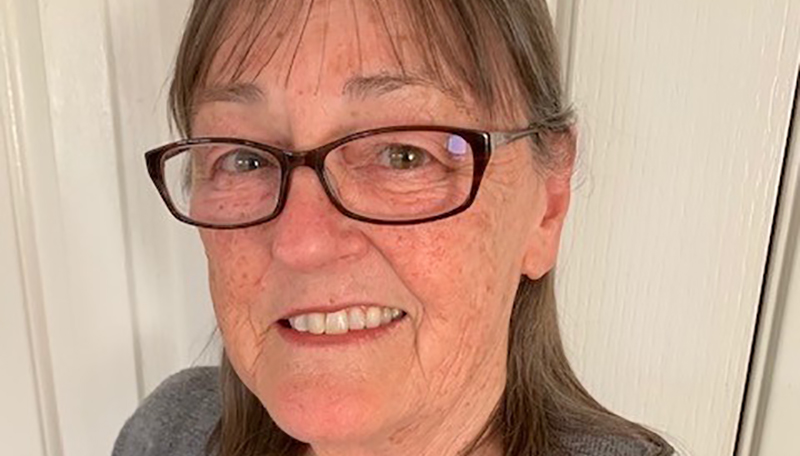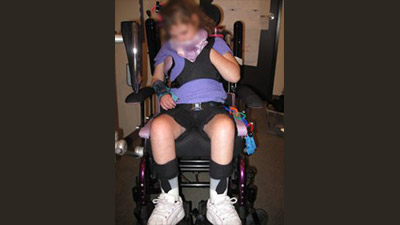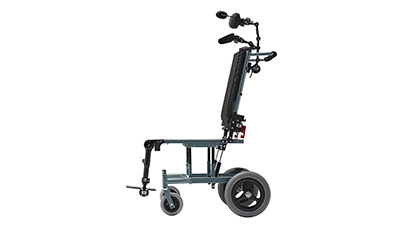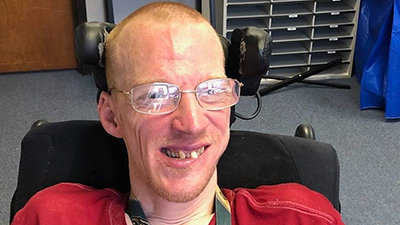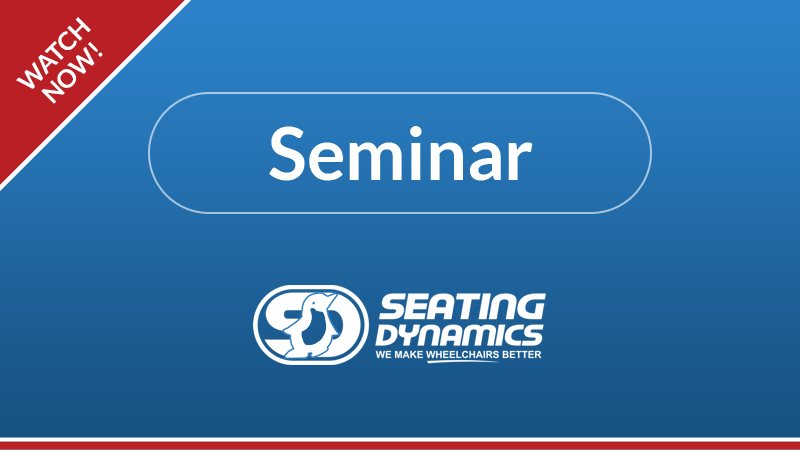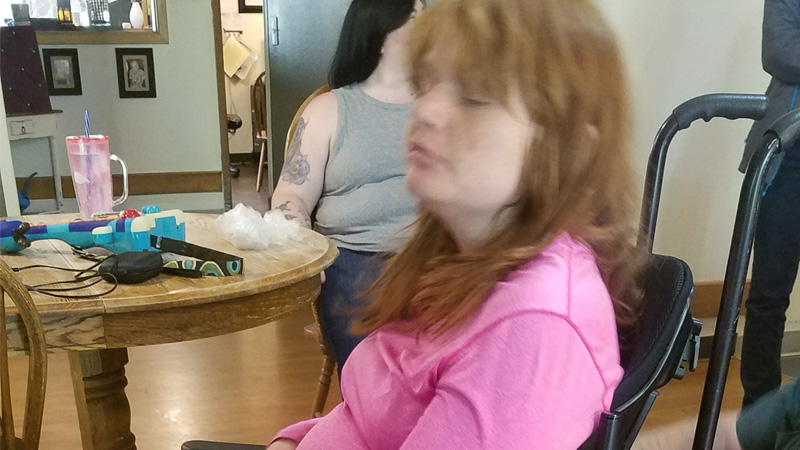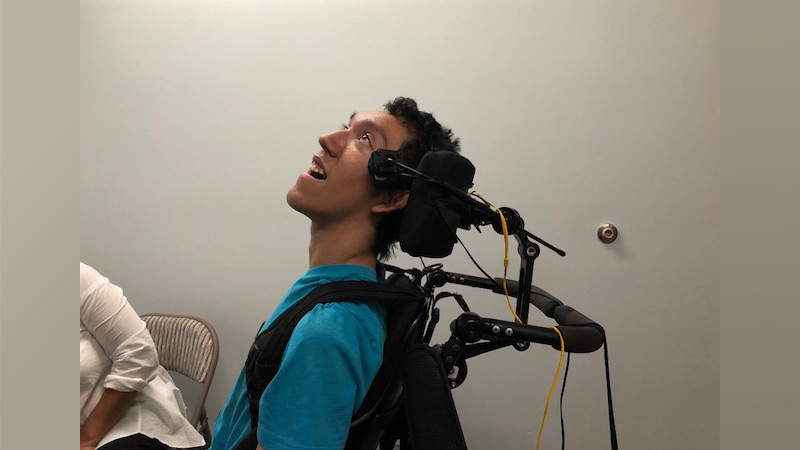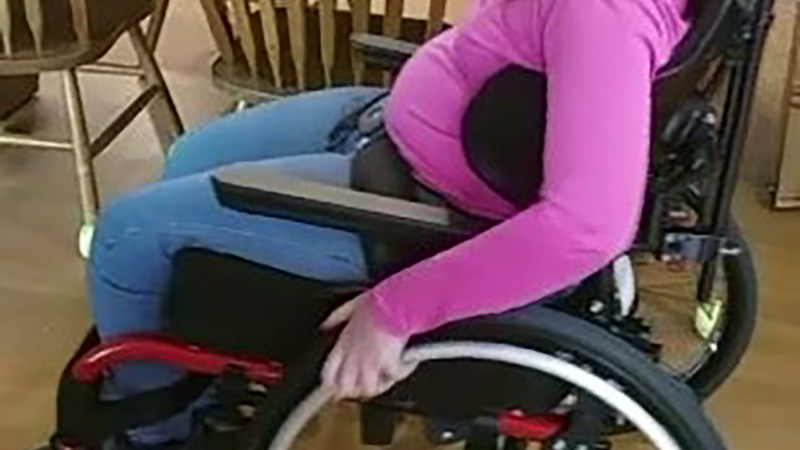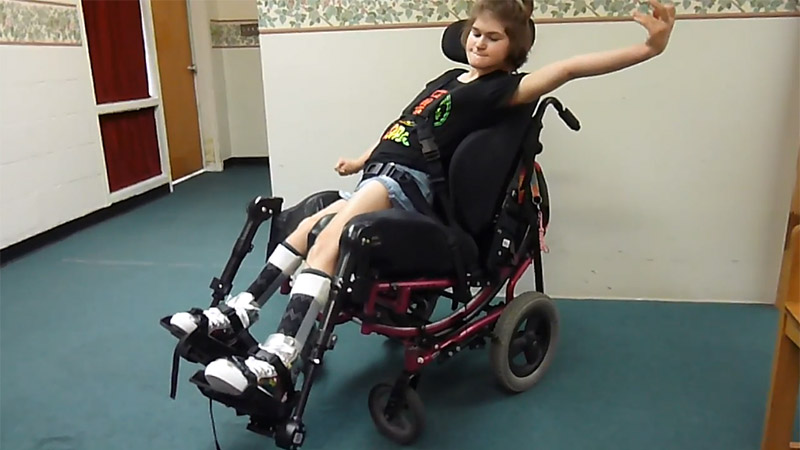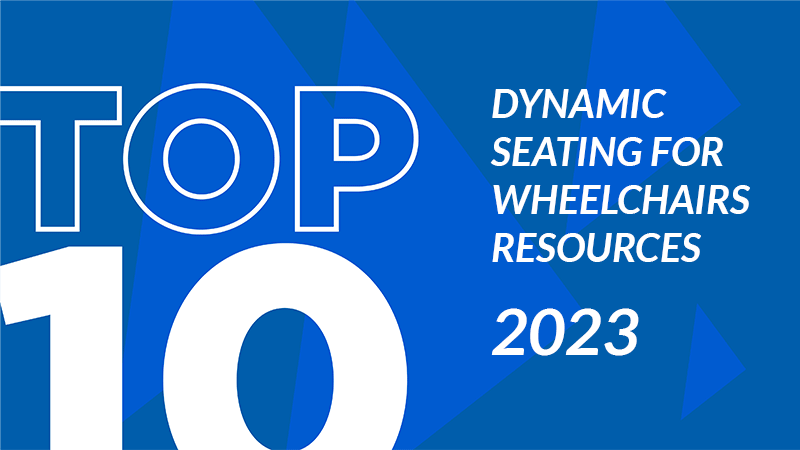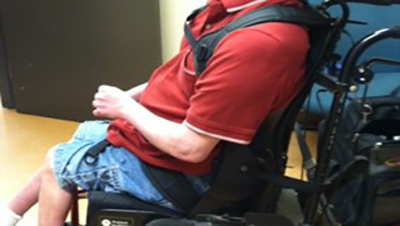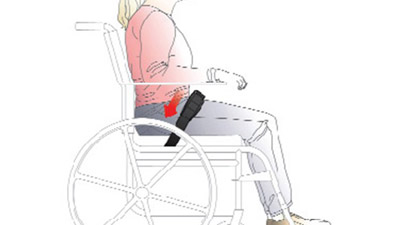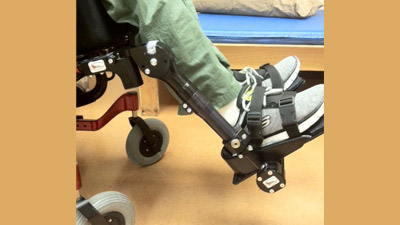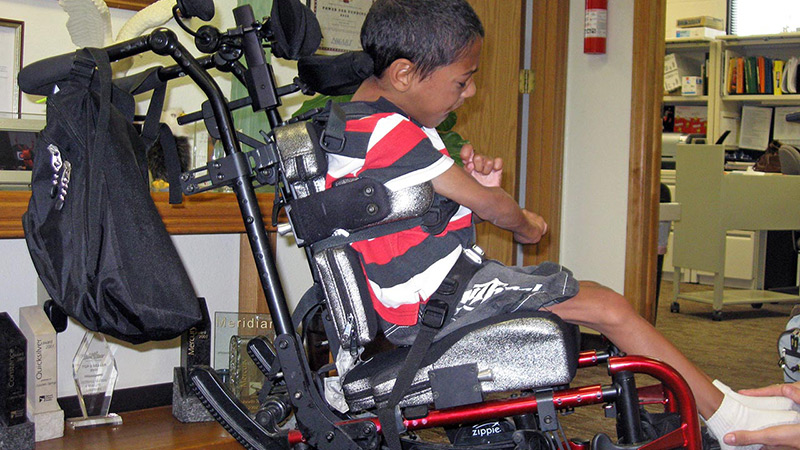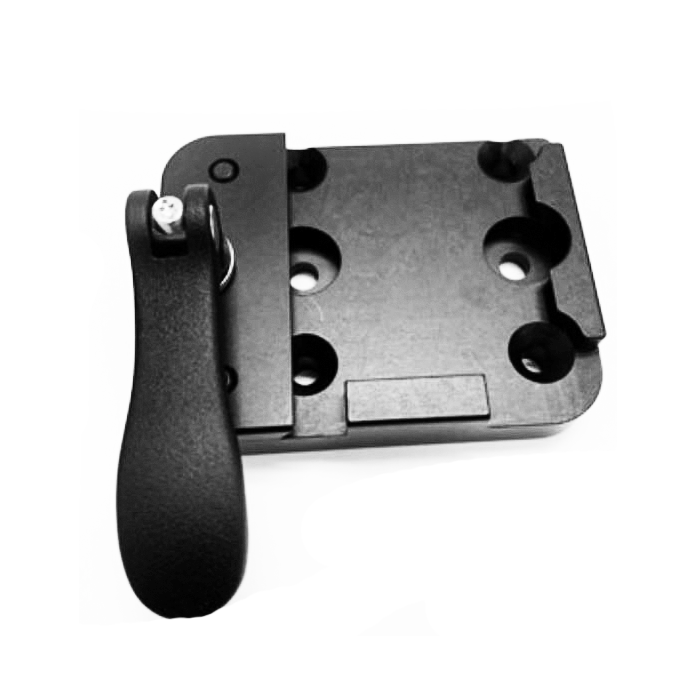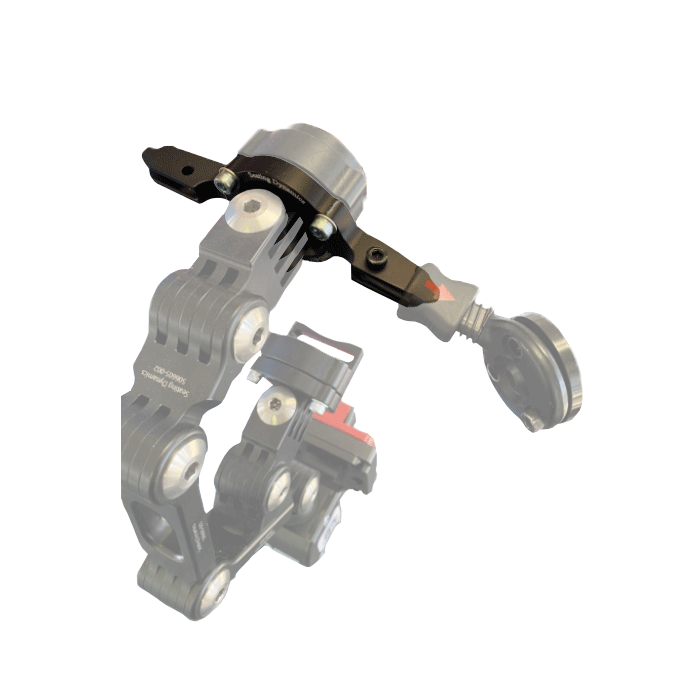Who Can Benefit from Dynamic Seating?
How Do I Know if a Client Needs a Dynamic Back?
In earlier blogs we have addressed key topics such as “What is Dynamic Seating ” and “Dynamic Seating: Clinical Indicators .” In this blog, we will focus on Dynamic Backs.
How Do I Know if a Client Needs Dynamic Seating?
In earlier blogs we have addressed key topics such as “What is Dynamic Seating” and “Dynamic Seating: Clinical Indicators.” In this blog series, we will take a look from the other side – what can you currently observe that indicates this person could benefit from Dynamic Seating?
Can Dynamic Seating Really Help GI Issues?
Dynamic Seating has so many clinical indicators. Research and clinician experience also show a benefit to the gastrointestinal system.
How Do I Know if a Client Needs Dynamic Footrests?
In earlier blogs we have addressed key topics such as “What is Dynamic Seating ” and “Dynamic Seating: Clinical Indicators .” In this blog, we will focus on Dynamic Footrests.
How Do I Know if a Client Needs Dynamic Head Support Hardware?
In earlier blogs we have addressed key topics such as “What is Dynamic Seating ” and “Dynamic Seating: Clinical Indicators .” In this blog, we will focus on Dynamic Head Support Hardware.
Dynamic Seating: Decreased Energy Consumption and Weight Gain
It has been established that Dynamic Seating absorbs and diffuses force. This intervention is often used to prevent client injury and equipment breakage, as well as to provide movement.
FAQ: When is Dynamic Seating NOT Clinically Indicated?
Are there instances when Dynamic Seating is NOT indicated for a client? A while back, a colleague of mine stated, “why wouldn’t we let a client move?” We are wired to move and seek out movement for a variety of reasons. Personally, I’m not a big fan of sitting still.
Dynamic Seating: Clinical Indicators
Dynamic seating has many potential applications. This blog covers the clinical indicators relevant to absorption and diffusing force, protecting the wheelchair user and more.
Comfort vs. Pain in Funding Documentation
If I go to the doctor for any reason, someone on staff always asks if I am in pain and, if so, what level of pain I’m in. Pain is a big deal. Beginning in the 1990’s, increased attention was given to pain and it was even dubbed the ‘fifth vital sign.”
Reducing Overall Extension
My Client isn’t Moving as Much – What Happened?
Dynamic Seating is designed to provide movement; however, client movement may actually decrease after using Dynamic Seating for a while. Why?
Using Dynamic Seating To Diffuse Force And Reduce Overall Extension
As discussed in our last 2 blogs, dynamic seating is commonly used to prevent breakage of the wheelchair seating system and frame. Another common application of dynamic seating is to diffuse force and reduce overall extension.
Reducing Pain
Pain in People Using Wheelchairs – Prevalence, Cause and Interventions
Michelle L. Lange, OTR/L, ABDA, ATP/SMS – NRRTS Directions
This article will summarize current research related to pain in people using wheelchairs.
Pain in People using Wheelchairs
People with conditions which include increased muscle tone and/or spasticity are likely to experience pain in their wheelchair seating system.…
Comfort vs. Pain in Funding Documentation
If I go to the doctor for any reason, someone on staff always asks if I am in pain and, if so, what level of pain I’m in. Pain is a big deal. Beginning in the 1990’s, increased attention was given to pain and it was even dubbed the ‘fifth vital sign.”
Preventing Equipment Breakage
Kristen – Extension and Equipment Breakage
Kristen is a 31 year old woman with the diagnosis of cerebral palsy. She has involvement in both legs and one upper extremity, with more involvement in the lower extremities (Triplegia).
Supplier Interview – Dynamic Seating Down Under with Astris PME, New South Wales, Australia
Meet Venesha Moodley and Laurie Grace of Astris PME and learn how they are using dynamic seating in New South Wales, Australia.
Darcy – Reducing Agitation and Providing Sensory Input through Movement
See how a Dynamic Rocker Back has not only satisfied Darcy’s need to rock in his wheelchair, but improved safety, sitting tolerance, function and decreased equipment breakage.
Ashley – Dynamic Seating: Dystonia & Equipment Breakage
Ashley is a 35 year old woman with the diagnoses of cerebral palsy and dystonia. She exhibits large and forceful movements (dystonia) which have led to injury to her legs and damage to the wheelchair. She needs to move and her movements increase when she is agitated or excited.
Dynamic Seating To Prevent Equipment Breakage, Part 1
Dynamic Seating is often used to prevent equipment breakage. Some clients who use wheelchair seating exhibit increased muscle tone. This is common in clients with diagnoses such as cerebral palsy, traumatic brain injury and Huntington’s disease. Increased muscle tone or spasticity is caused by an imbalance of signals from the central nervous system to the muscles. In addition to increased muscle tone, primitive reflexes and involuntary movements may also be present.
Dynamic Seating To Prevent Equipment Breakage, Part 2
Our last blog addressed using dynamic seating to prevent equipment breakage, particularly with clients who exhibit increased muscle tone. These clients often display strong extension, sometimes referred to as an “extensor thrust.” This intermittent and strong force can lead to breakage of the wheelchair seating system and frame.
A Dynamic Journey – a solution to wheelchair breakage and so much more
This blog addresses various aspects of Dynamic Seating – seating that provides movement in response to client forces. Just how do people actually find this solution? Well, many caregivers and health care professionals are working with a client who has broken their seating system, mounting hardware and/or mobility base. Wheelchair breakage may occur repeatedly over time.
Preventing Client Injury
Preserving Joint Integrity through Dynamic Seating
Daniel is a teenage boy with the diagnoses of cerebral palsy and seizures. He has significantly high muscle tone and has had varied success with tone management over the years. If his feet are not strapped to the footplates, he extends at his knees and his feet are then hanging far in front of the footplates. This increases the turning radius of the wheelchair, places his lower legs at risk of injury, and leads to a loss of position of his pelvis. As a result, his feet have been strapped into shoeholders for most of his life. This positioning has kept his feet on the footplates, but has created other issues.
Ashley – Dynamic Seating: Dystonia & Equipment Breakage
Ashley is a 35 year old woman with the diagnoses of cerebral palsy and dystonia. She exhibits large and forceful movements (dystonia) which have led to injury to her legs and damage to the wheelchair. She needs to move and her movements increase when she is agitated or excited.
Supplier Interview: Concussions don’t Just Happen in Football
Recently I had a nice conversation with a colleague about Dynamic Seating. Joe McKnight is Director of Business Development in California, Nevada, and Arizona for Numotion, and he has been in the wheelchair seating and mobility field for a long time – probably longer than he would like to admit! Having that much experience provides a unique view. Joe states that “how we practiced 30 years ago and how we practice now should be different. We need to re-evaluate how we are doing things and how we need to change.”
Can Dynamic Seating Prevent Client Injury?
Michelle L. Lange, OTR/L, ABDA, ATP/SMS Our past two blogs have addressed clinical benefits of Dynamic Seating, specifically the evidence…
Providing Movement
Canadian Seating and Mobility Conference: Providing Movement for Clinical Benefit
This course will define dynamic seating, as well as the clinical benefits of this intervention. A variety of product options and features will be reviewed to better match these features to a specific client’s needs.
Alpine Rehab Conference: Muscle Tone, Tone, Management and Dynamic Seating Intervention
This course will explore muscle tone, implications in wheelchair seating, and interventions. We will start with muscle tone definitions, etiology, pathophysiology, movement disorders, and related diagnoses.
Supplier Interview – Dynamic Seating Down Under with Astris PME, New South Wales, Australia
Meet Venesha Moodley and Laurie Grace of Astris PME and learn how they are using dynamic seating in New South Wales, Australia.
Clinician Interview: Kaye Donec – diffusing tone, preventing breakage, and providing movement
Meet Kaye Donec, former Individualized Services Team Leader of the Adult Therapy Program at the Disability Services Department of Communities in Western Australia, and learn how she used Dynamic Seating in her career.
Darcy – Reducing Agitation and Providing Sensory Input through Movement
See how a Dynamic Rocker Back has not only satisfied Darcy’s need to rock in his wheelchair, but improved safety, sitting tolerance, function and decreased equipment breakage.
Dynamic Seating To Provide Vestibular Input, Part 1
Dynamic Seating moves in response to client forces. Many clients move, not due to increased extensor tone, but rather for the explicit purpose of moving. We all tend to seek out movement. We are wired to move and movement has so many benefits. Movement can calm, arouse, work muscles and provide comfort by varying our position. From a sensory standpoint, movement provides vestibular input.
Dynamic Seating to Provide Vestibular Input, Part 2
Our last blog discussed how dynamic seating can provide vestibular input for clients. Vestibular input can, in turn, calm agitated clients and help sub-aroused clients be more alert. Movement can also increase comfort and general muscle activity.
The Importance of Movement for All
Movement is normal. We are born moving and continue to do so our entire life. Our bodies are designed to move – it is actually easier to move than to stay still! When movement is prevented or restricted, we experience negative physiological effects. Movement is a good thing, however many of us are not moving enough.
Improving Postural Control
Free CEU: Positioning the Head
Join OT Michelle Lange for Positioning the Head to explore strategies beyond the head support of a wheelchair, including specific positioning interventions and addressing visual issues.
Can Dynamic Seating Improve Postural Control?
Did you know that research has also demonstrated that Dynamic Seating can improve postural control and function?
Improving Function
Dynamic Seating: Decreased Energy Consumption and Weight Gain
It has been established that Dynamic Seating absorbs and diffuses force. This intervention is often used to prevent client injury and equipment breakage, as well as to provide movement.
Addressing Dystonia
Dystonia and Dynamic Seating
Many clients with increased muscle tone also display dystonia. Dystonia is “characterized by involuntary, patterned, sustained, or repetitive contractions of opposing muscles, resulting in abnormal twisting body movements and abnormal postures”.
Webinar Series: Muscle Tone, Tone Management and Dynamic Seating Intervention
This series of three webinars, presented by OT Michelle Lange, explores the relationship between Muscle Tone, Movement, Wheelchair Seating Systems and Dynamic Seating.
Ashley – Dynamic Seating: Dystonia & Equipment Breakage
Ashley is a 35 year old woman with the diagnoses of cerebral palsy and dystonia. She exhibits large and forceful movements (dystonia) which have led to injury to her legs and damage to the wheelchair. She needs to move and her movements increase when she is agitated or excited.
Top 10 Dynamic Seating for Wheelchairs Resources from 2023
From FREE CEUs to FAQs, take a look back at 2023 to see what Dynamic Seating for wheelchairs resources our community found most helpful this past year.
The Restraint Debate
Dynamic Seating and the Restraint Debate
There are times when a wheelchair seating and mobility team, after careful evaluation and problem-solving, makes specific recommendations – only to hear that these well thought out interventions may be considered to be a restraint. So just what is considered a restraint and how does this affect Dynamic Seating?
Bread and Butter: Dynamic Backs and Pelvic Positioning Belts
Just like Bread and Butter, Dynamic Backs and Pelvic Positioning Belts go together. Dynamic Backs are designed to allow movement at the pelvis and torso in response to client force and then return the client to a neutral starting position. A key component is the pelvic positioning belt, which is designed to maintain the pelvis in as neutral a position as possible in relation to the seating system. When that seating system moves, the pelvic belt is even more critical in maintaining pelvic position.
Peanut Butter and Jelly: Dynamic Footrests and Securing the Feet
In a recent blog, we discussed how, just like Bread and Butter, use of a Dynamic Back requires the use of a Pelvic Positioning Belt to maintain the position of the pelvis during movement of the Dynamic Back. Well, just like Peanut Butter and Jelly, use of Dynamic Footrests requires the feet to be secured in order for client forces to activate this dynamic component.
Assessment
Evaluation, Simulation, and Dynamic Seating Trials
Recently a therapist asked me how she could recommend Dynamic Seating components if she didn’t actually try these with a client. Great question! It is not typically realistic to conduct Dynamic Seating trials as one would need to place Dynamic Seating components on a client’s wheelchair for trial and often the frame would need to be modified to accept these components.

